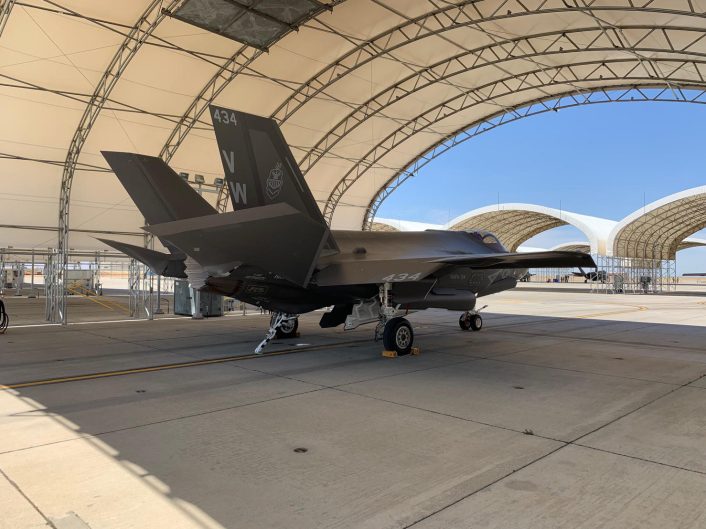Marines are also getting the F-35C CATOBAR (Catapult Assisted Take Off But Arrested Recovery) variant of the Lightning II. Here’s their first Carrier Variant Jet in VMFA-314 markings.
Along with flying the F-35B STOVL (Short Take Off Vertical Landing) variant of the Lightning II aircraft, that operates from amphibious assault ships, the U.S. Marine Corps are starting transitioning to the F-35C, the CATOBAR (Catapult Assisted Take Off But Arrested Recovery) variant of the Joint Strike Fighter (also known as CV – Carrier Variant), that can operate from U.S. Navy’s flattops (the Nimitz-class ones, until issues with the Ford-class carriers are fixed).
Indeed, the Corps plans to operate 353 F-35Bs and 67 F-35Cs to replace three types of aircraft: the F/A-18A++/C/D “Legacy” Hornet, the AV-8B Harrier II and the EA-6B Prowler.
Marine Fighter Attack Squadron (VMFA) 314, is the first Marines squadron that will replace the “Legacy” Hornet with the brand new F-35C.
At the time of writing, VMFA-314 has already started training alongside the U.S. Navy’s VFA-125, the F-35’s only Fleet Replacement Squadron, based at NAS Lemoore, California. The plan is to complete the preparation by next Spring.
By the time the Marine Aircraft Group 11 commander officer will certify the squadron as “safe for flight” and ready to operate independently of the FRS, VMFA-314 will have returned to Marine Corps Air Station Miramar, California.
The Initial Operational Capability (IOC) of the F-35C was declared on Feb. 28, 2019, after the first F-35C squadron, Strike Fighter Squadron (VFA) 147, conducted aircraft carrier qualifications aboard USS Carl Vinson (CVN-70) and received its Safe-For-Flight Operations Certification.
“In order to declare IOC, the first operational squadron must be properly manned, trained and equipped to conduct assigned missions in support of fleet operations. This includes having 10 Block 3F, F-35C aircraft, requisite spare parts, support equipment, tools, technical publications, training programs and a functional Autonomic Logistic Information System (ALIS). Additionally, the ship that supports the first squadron must possess the proper infrastructure, qualifications and certifications. Lastly, the Joint Program Office (JPO), industry, and Naval Aviation must demonstrate that all procedures, processes and policies are in place to sustain operations,” the Navy added in an official statement.
VFA-147 will conduct the first deployment with the F-35C integrated into the Carrier Air Wing 2, aboard the Nimitz-class USS Carl Vinson in 2021, and Marine Fighter Attack Squadron (VMFA) 314 will conduct the second F-35C carrier deployment.
Interestingly, at least one F-35C already sports full VMFA-314 markings. The first photos of CF-35/169601, modex VW-434, including those that you can find in this article, were posted three weeks ago by Col. Simon Doran, MAG 11’s commanding officer. More shots have started circulating on the Internet after the aircraft, with just a handful flying hours, made a public appearance at Tinker AFB Air Show, on Jun. 1, 2019.

H/T to Stefano D’Urso who helped with the preparation of this article.













